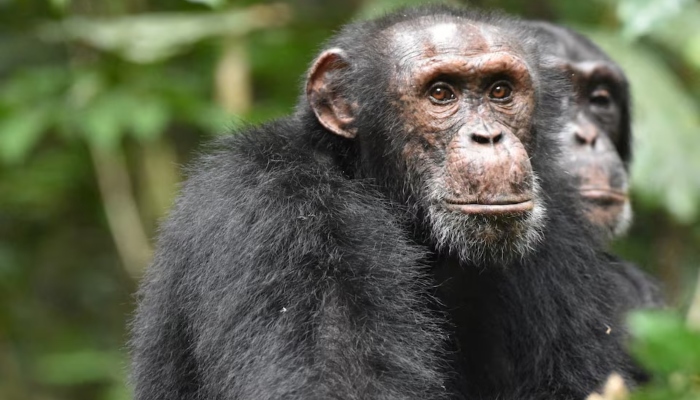Wild chimpanzees show genetic adaptations to diverse habitats
Chimpanzees are species nearest genetically to humans, sharing about 98.8% of our DNA
January 11, 2025

Wild chimpanzees live in diverse habitats across Africa, ranging from lush tropical rainforests to open woodlands and savannahs. According to new research, these close relatives of human species have evolved fascinating genetic adaptations suited to their environments, including resistance to diseases like malaria.
By analysing genetic data from 388 wild chimpanzees across 18 countries, researchers uncovered adaptations influenced by local habitats and revealed previously unrecognised genetic diversity within the species.
Forest environments, more so than open habitats, are teeming with pathogens like the mosquito-borne parasitic disease malaria. The study found that forest-dwelling chimpanzees showed changes in genes associated with disease resistance, including some of the same ones tied to adaptation to malaria in humans.
"In forest chimpanzees, we identify signatures of adaptation to pathogens, with the strongest signal being to malaria. We identify signatures of adaptation in two genes that are known to mediate resistance and adaptation to malaria in humans. This thus may represent a potential signal of parallel adaptation to the malaria parasite in the two species," said University College London evolutionary geneticist Aida Andrés, who led the study published this week in the journal Science.
"This is an evolutionary study, so whether genetic variation in these two genes indeed confers resistance to malaria in the wild has not yet been established, and will have to be investigated in future studies. On the other hand, we did not find evidence of genetic adaptation to malaria in woodland-savannah chimpanzees, perhaps because forest environments are associated with a stronger pressure of malaria," Andrés said.
Malaria remains a deadly threat to humans. According to the UN World Health Organisation, there were an estimated 597,000 malaria deaths worldwide in 2023.
Chimpanzees, and the closely related bonobos, are the species nearest genetically to humans, sharing about 98.8% of our DNA. The human and chimpanzee evolutionary lineages split about 6.9 million to 9 million years ago, according to research published in 2023.
"If, as we propose, the adaptive mechanisms to the same infectious agent is likely similar across species, identifying signatures of genetic adaptation in apes may help us identify potential yet-unknown genetic adaptations in human populations," Andrés said.
The researchers based their findings on genetic material extracted from chimpanzee feces collected across equatorial Africa. The 52 collection sites spanned the Central African Republic, Cameroon, Congo, the Democratic Republic of the Congo, Equatorial Guinea, Gabon, Ghana, Guinea, Guinea-Bissau, Ivory Coast, Liberia, Mali, Nigeria, Rwanda, Senegal, Sierra Leone, Tanzania and Uganda.
Chimpanzees are considered endangered because of habitat destruction, poaching, and infectious diseases. The total population in the wild is estimated at about 170,000 to 300,000, according to the World Wildlife Fund.
The study's findings have implications for conservation of the species, suggesting that changes in climate and in land use in their range will result in different effects on different chimpanzee populations.
"While rainforest degradation is perhaps a danger mostly for forest chimpanzees, habitat changes that can increase malaria pressure are perhaps a danger mostly for woodland-savannah populations," Andrés said.
"This study suggests that we should aim to conserve the considerable genetic diversity of chimpanzees, including their adaptive genetic diversity. This is both to conserve the existing populations and to preserve the adaptive potential to the species — so they are more likely to be able to adapt to upcoming habitat changes due, for example, to climate change," Andrés added.











